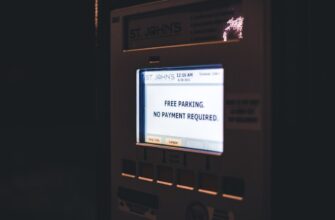- Introduction: Trading SOL Breakouts on Binance
- What Is a Breakout Trading Strategy?
- Why Trade SOL Breakouts on a 15-Minute Timeframe?
- Setting Up Your Binance Chart for SOL Breakouts
- Step-by-Step 15-Minute SOL Breakout Strategy
- Risk Management Essentials
- Common Breakout Trading Mistakes to Avoid
- FAQ: SOL Breakout Strategy on Binance
- Conclusion: Precision in Practice
Introduction: Trading SOL Breakouts on Binance
Solana (SOL) has emerged as a top-tier cryptocurrency with explosive volatility, making it ideal for short-term traders. When paired with Binance’s deep liquidity and advanced charting tools, the 15-minute timeframe becomes a powerful playground for breakout strategies. This guide reveals a professional approach to capturing SOL’s momentum shifts on Binance, combining technical precision with actionable risk management. Whether you’re a day trader or swing trader, mastering this method could unlock consistent opportunities in fast-moving markets.
What Is a Breakout Trading Strategy?
A breakout strategy capitalizes on price movements when an asset surpasses key support or resistance levels, signaling potential trend acceleration. For SOL on Binance’s 15-minute charts, this means:
- Bullish Breakouts: SOL closes above resistance with rising volume, indicating upward momentum.
- Bearish Breakouts: Price drops below support with increasing volume, suggesting downward continuation.
- Core Principle: Breakouts resolve consolidation phases, often triggering 2-5% moves within minutes on volatile assets like SOL.
Why Trade SOL Breakouts on a 15-Minute Timeframe?
Binance’s 15-minute charts strike the perfect balance for SOL traders:
- Reduced Noise: Filters out minor fluctuations seen in 1-5 minute charts while capturing intraday trends.
- Optimal Frequency: Generates 2-5 high-probability setups daily without overtrading.
- SOL-Specific Advantages: High volatility amplifies breakout profits, and Binance’s 24/7 market ensures liquidity.
- Strategic Alignment: Complements broader trends visible on hourly/daily charts for higher accuracy.
Setting Up Your Binance Chart for SOL Breakouts
Optimize your trading interface with these steps:
- Select SOL/USDT pair on Binance’s Trading View platform.
- Set timeframe to 15 minutes.
- Add key indicators:
- 20-period Exponential Moving Average (EMA) for trend direction
- Volume bars to confirm breakout validity
- Horizontal lines to mark support/resistance levels
- Enable price alerts for key levels to avoid missing entries.
Step-by-Step 15-Minute SOL Breakout Strategy
Execute trades systematically:
- Identify Consolidation: Spot SOL trading in a 1-3% range for at least four 15-minute candles.
- Mark Key Levels: Draw resistance (price ceiling) and support (price floor) using recent swing highs/lows.
- Confirm Breakout: Enter only if candle closes beyond the level WITH volume ≥ 150% of 20-candle average.
- Entry Point: Buy 1-2 ticks above resistance (bullish) or sell short below support (bearish). Use limit orders.
- Stop-Loss: Place 0.5-1% below breakout level for longs, or above for shorts.
- Take Profit: Target next resistance/support zone or use 1:3 risk-reward ratio (e.g., 3% gain for 1% risk).
Example: SOL consolidates at $150 resistance. A candle closes at $151.50 with surging volume → Enter long with stop-loss at $149.50, profit target at $156.
Risk Management Essentials
Protect capital while trading SOL breakouts:
- Risk ≤1% of account per trade to survive losing streaks.
- Avoid trading during Binance maintenance or low-volume periods (e.g., weekends).
- Scale out positions: Close 50% at first target, move stop-loss to breakeven, and trail remainder.
- Maximum daily loss limit: 5% of account balance.
Common Breakout Trading Mistakes to Avoid
Steer clear of these pitfalls:
- False Breakouts: Entering before volume confirmation or candle close.
- Overleveraging: SOL’s volatility magnifies losses—use ≤5x leverage on Binance.
- Ignoring BTC Correlation: If Bitcoin trends downward, SOL breakouts often fail—check BTC’s 15-minute chart.
- Revenge Trading: Chasing losses after a failed breakout increases errors.
FAQ: SOL Breakout Strategy on Binance
Q1: What’s the best time to trade SOL breakouts on 15-minute charts?
A: Overlap of US/EU sessions (8 AM – 12 PM UTC) when volume peaks, reducing false signals.
Q2: How do I distinguish real vs. fake breakouts?
A: Real breakouts show sustained volume after the candle close; fakeouts often reverse immediately with declining volume.
Q3: Can I automate this strategy on Binance?
A: Yes! Use TradingView alerts + Binance API bots, but backtest thoroughly first.
Q4: Which pairs work best with this strategy besides SOL/USDT?
A: High-volatility coins like ADA/USDT or AVAX/USDT, but adjust targets for lower liquidity.
Conclusion: Precision in Practice
Mastering SOL breakouts on Binance’s 15-minute charts demands discipline—wait for confirmed setups, manage risk ruthlessly, and leverage technical confluence. Start with small positions, refine your entries using historical data, and remember: consistency trumps home runs. As SOL continues its volatile trajectory, this strategy offers a structured path to capitalize on its momentum shifts.








